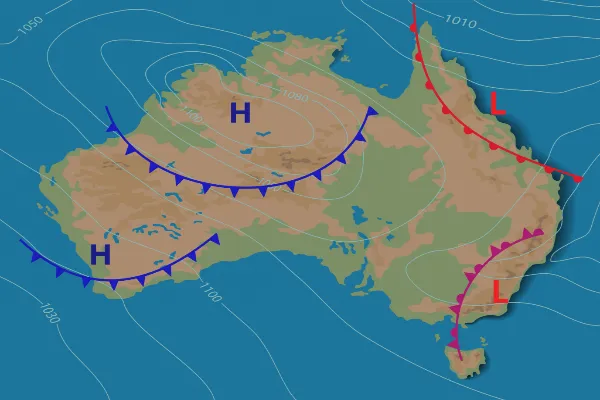When is the best time to travel to Australia?

Australia is one of the most popular travel destinations in the world. With its beautiful beaches, vibrant cities, and unique wildlife, there is something for everyone to enjoy. The question many people have is when is the best time to visit Australia.
The answer to this question can depend on a variety of factors, such as what kind of activities you are looking for, the weather, and the cost of travel. In this article, we will provide information to help you decide when is the best time to visit Australia.
We will discuss factors such as weather, seasons, cost, and attractions. We will also provide some tips to help you plan your trip. With this information, you can make an informed decision about when the best time to visit Australia is for you.
Exploring the Best Time of Year to See Australia’s Unique Wildlife
Australia is renowned for its unique and diverse wildlife, with many species found nowhere else in the world. Whether you’re a resident or a visitor, there’s no better way to experience the country’s incredible natural beauty than to witness its wildlife in its natural habitat.
To help you plan the perfect wildlife viewing adventure, we’ve put together this guide to the best time of year to see Australia’s unique wildlife. The best time to view Australia’s wildlife depends largely on your location.
In the temperate south, spring (September to October) is a great time to observe the many species of birds and animals that make their home in the region. The warmer weather brings out a variety of species, from the elusive platypus to the iconic koala.
In the tropical north, the wet season (November to April) is the best time to find and observe the many species that live in the area. During this time, the region’s rivers and wetlands are flooded with water, creating the perfect environment for wildlife spotting.
This is also the best time to view Australia’s most famous and iconic wildlife species, such as the saltwater crocodile, the cassowary, and the kangaroo. Finally, in the arid central and western areas, winter (May to August) is the ideal time to view the region’s unique wildlife. During this time, the area’s waterholes are full of life, with many species of birds and animals coming to drink and bathe.
This is also the best time to observe Australia’s iconic red kangaroo, as well as many other species of marsupials. No matter where you are in Australia, there’s no shortage of unique and fascinating wildlife to observe.
With the right timing and a bit of luck, you can have a once-in-a-lifetime wildlife viewing experience that you’ll never forget.
Budget-Friendly Travel Tips for Visiting Australia During Peak Seasons
Australia is a beautiful country with a lot to offer tourists, but the cost of travel can be expensive during peak seasons. If you are planning to visit Australia during the peak season, there are a few budget-friendly tips to help you save money.
First, plan your trip well in advance and book your flights, hotels, and car rentals as early as possible. This will help ensure you get the best deals and discounts. You should also consider taking advantage of low-cost airlines and budget hotels, as well as searching for deals online.
Second, consider booking your activities in advance. Many tour companies offer discounts and packages for booking in advance. You can also look for discounts and coupons on websites such as Groupon.
Third, research the best deals for food and entertainment. Look for restaurants and attractions that offer discounts or free entry for certain days. You may also want to consider eating at local markets and street vendors, as these can be much more cost-effective than dining in a restaurant.
Finally, consider taking public transport instead of renting a car. Not only is this more cost-effective, but it can also be a great way to explore the country.
Additionally, many cities offer discounts and deals for public transport users.
By following these budget-friendly tips, you can enjoy the beauty of Australia without breaking the bank. With a bit of research and planning, you can enjoy the best that Australia has to offer without spending too much.
Experiencing Australia’s Different Regions During Different Seasons: What to Expect?
Australia is a vast continent with a wide variety of climates and landscapes. Depending on the region and the season, visitors to Australia can expect to experience a range of climates and activities.
The tropical north of Australia is generally hot and humid year-round, with an average daytime temperature of 31 °C (88 °F). In the summer months (December–February), temperatures can rise up to 35 °C (95 °F) or higher, with higher levels of humidity.
This is a great time for swimming, snorkelling and other outdoor activities, such as exploring the Great Barrier Reef or visiting the rainforests of the Daintree. In the south of Australia, the temperate climate means that temperatures are mild throughout the year, with summer temperatures reaching around 20 °C (68 °F).
In winter (June–August), temperatures can dip down to an average of 10 °C (50 °F). As autumn and winter roll around, the countryside is transformed by a blanket of red and gold foliage, making it an ideal time for exploring Australia’s wine regions.
The desert centre of Australia is characterised by extreme temperatures. Summer temperatures can reach up to 45 °C (113 °F), while winter temperatures drop to around 0 °C (32 °F). This region is best explored in the cooler months, when the dry air and clear skies make for perfect stargazing.
No matter the season, Australia offers a wealth of experiences for visitors. From beach days in the summer to wintery hikes through the snow-covered alps, Australia is a land of remarkable beauty and variety.







